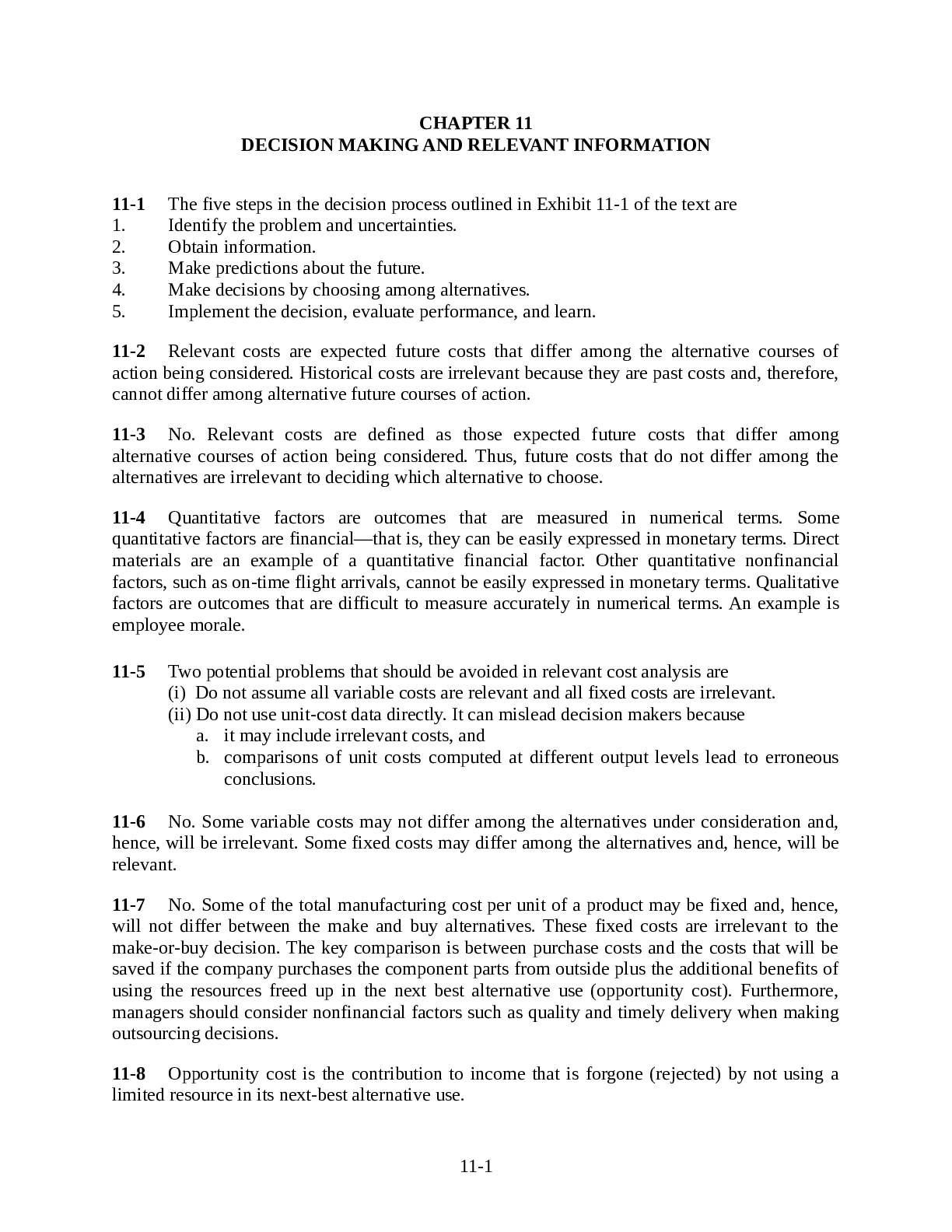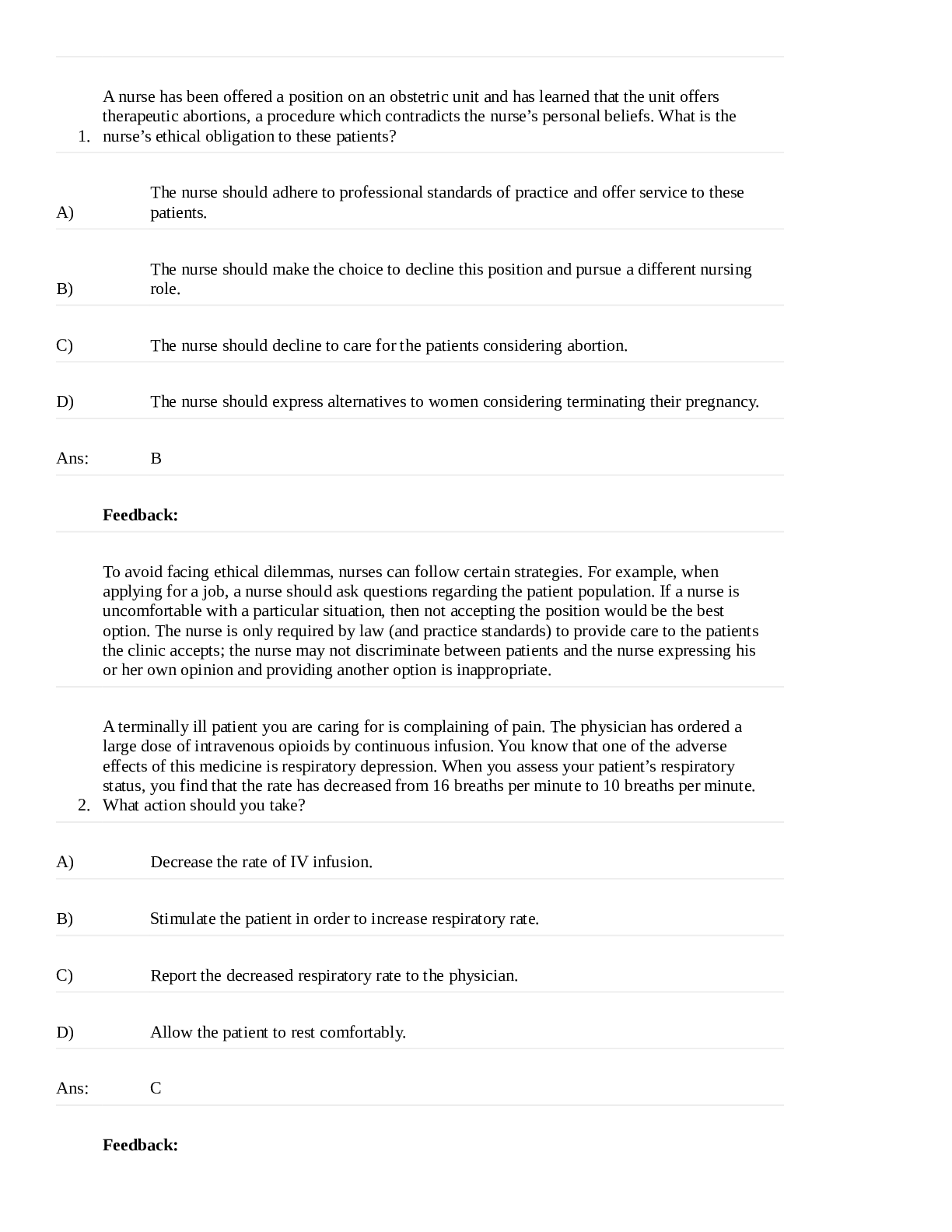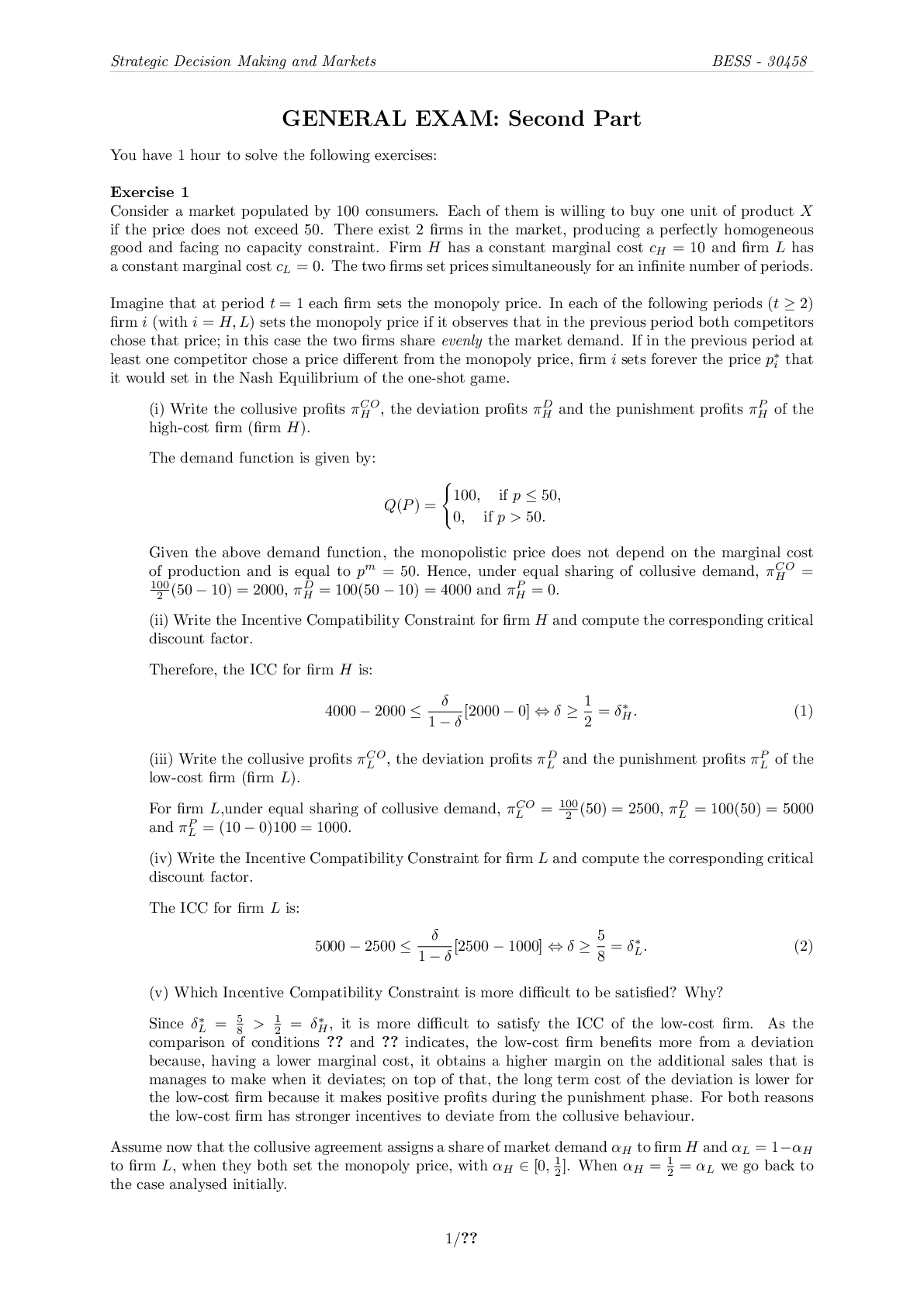Accounting > QUESTIONS & ANSWERS > University of Minnesota, Duluth; ACCT 3201 Chapter 11 Decision Making and Relevant Information QUEST (All)
University of Minnesota, Duluth; ACCT 3201 Chapter 11 Decision Making and Relevant Information QUESTIONS AND ANSWERS
Document Content and Description Below
Cost Accounting: A Managerial Emphasis, 16e (Horngren) Chapter 11 Decision Making and Relevant Information 11.1 Objective 11.1 1) A decision model involves a(n) ________. A) informal method of mak... ing a choice at the lower level management using sensitivity analysis B) formal method of making a choice that often involves both quantitative and qualitative analyses C) informal method of making a choice which is discussed in detailed in the financial reports D) formal method of making a choice at the lower level management using advanced management techniques such as balance scorecard Answer: B Diff: 1 Objective: 1 AACSB: Analytical thinking 2) Feedback regarding previous actions may affect ________. A) future predictions B) implementation of the decision C) the decision model D) All of these answers are correct. Answer: D Diff: 2 Objective: 1 AACSB: Analytical thinking 3) Place the following steps from the five-step decision process in order: A = Obtain information including historical costs B = Evaluate performance to provide feedback C = Make decisions choosing among alternatives D = Make predictions about the future E = Identify the problem and uncertainties A) A, E, D, B, C B) E, A, D, B, C C) E, A, D, C, B D) D, C, B, A, E Answer: C Diff: 2 Objective: 1 AACSB: Analytical thinking4) The formal process of choosing between alternatives is known as a(n) ________. A) relevant model B) decision model C) alternative model D) prediction model Answer: B Diff: 1 Objective: 1 AACSB: Analytical thinking 5) Flash City Inc. manufactures small flash drives and is considering raising the price by 75 cents a unit for the coming year. With a 75-cent price increase, demand is expected to fall by 7,000 units. Current Projected Demand 79,000 units 72,000 units Selling price $8.50 $9.25 Incremental cost per unit $5.80 $5.80 If the price increase is implemented, operating profit is projected to ________. A) increase by $35,100 B) decrease by $5,250 C) increase by $5,250 D) decrease by $7,000 Answer: A Explanation: Change in operating income = [72,000 × ($9.25 - $5.80)] - [79,000 × ($8.50 - $5.80)] = Increase of $35,100 Diff: 2 Objective: 1 AACSB: Application of knowledge 6) Flash City Inc. manufactures small flash drives and is considering raising the price by 75 cents a unit for the coming year. With a 75-cent price increase, demand is expected to fall by 7,000 units. Current Projected Demand 78,000 units 71,000 units Selling price $9.00 $9.75 Incremental cost per unit $6.80 $6.80 Would you recommend the 75-cent price increase? A) No, because demand decreased. B) No, because the selling price increases. C) Yes, because contribution margin per unit increases. D) Yes, because operating profits increase. Answer: D Diff: 2 Objective: 1 AACSB: Application of knowledge7) When using the five-step decision process, which one of the following steps should be done last? A) obtain information B) choose an alternative C) evaluation and feedback D) implementing the decision Answer: C Diff: 2 Objective: 1 AACSB: Analytical thinking 8) When using the five-step decision process, which one of the following steps should be done first? A) obtain information B) choose an alternative C) evaluation and feedback D) implementing the decision Answer: A Diff: 2 Objective: 1 AACSB: Analytical thinking 9) A decision model is an informal method for making a choice, using simpler methods like surveying. Answer: FALSE Explanation: A decision model is a formal method of making a choice that often involves both quantitative and qualitative analyses. Diff: 1 Objective: 1 AACSB: Analytical thinking 10) Feedback from previous decisions uses historical information and, therefore, is irrelevant for making future predictions. Answer: FALSE Explanation: Historical costs may be helpful in making future predictions, but are not relevant costs for decision making. Diff: 1 Objective: 1 AACSB: Analytical thinking11) Explain the five-step decision process that managers can use to make decisions. Answer: The five step decision process is (a) Identify the problem and uncertainties, (b) Obtain information, (c) Make predictions, (d) Make decisions by choosing among alternatives, and (e) Implement the decision, evaluate performance to provide feedback. Identifying the problem and uncertainties involves finding risks, uncertainties, or other failures associated with a business which will affect the internal and external prospects of the firm. Obtaining information involves collecting all data pertinent to the decision situation, both quantitative and qualitative, and determining which information is relevant to the decision, and determining which alternatives are being considered. Making predictions involves using the information obtained above and attempting to predict what the future costs and benefits will be for each of the various alternatives. Choosing an alternative involves comparing the predicted benefits of each alternative with each of the predicted costs (as well as other non-quantitative factors), and selecting an alternative that maximizes the difference between the expected benefits and the expected costs. Implementing the decision involves actually doing the alternative selected above and making all the necessary changes in operations to support the decision. Evaluating the performance of the decision involves learning from the results of the decision and seeing which predictions were accurate and determining how to avoid any difficulties encountered in either the decision-process or the implementation. Diff: 2 Objective: 1 AACSB: Analytical thinking 11.2 Objective 11.2 1) Which of the following is not true with regards to relevant costs and relevant revenues? A) They are sunk costs and historical revenues B) They are expected costs and expected revenues C) They occur in the future D) The differ among alternative courses of action Answer: A Diff: 2 Objective: 2 AACSB: Analytical thinking 2) Sunk costs ________. A) are future costs for decision making B) are avoidable costs C) are irrelevant for decision making D) are foregone contribution by not using a limited resource in its next-best alternative use Answer: C Diff: 2 Objective: 2 AACSB: Analytical thinking 3) Sunk costs ________. A) are relevant B) are differential C) have future implications D) are ignored when evaluatin [Show More]
Last updated: 1 year ago
Preview 1 out of 80 pages

Buy this document to get the full access instantly
Instant Download Access after purchase
Add to cartInstant download
We Accept:

Also available in bundle (1)
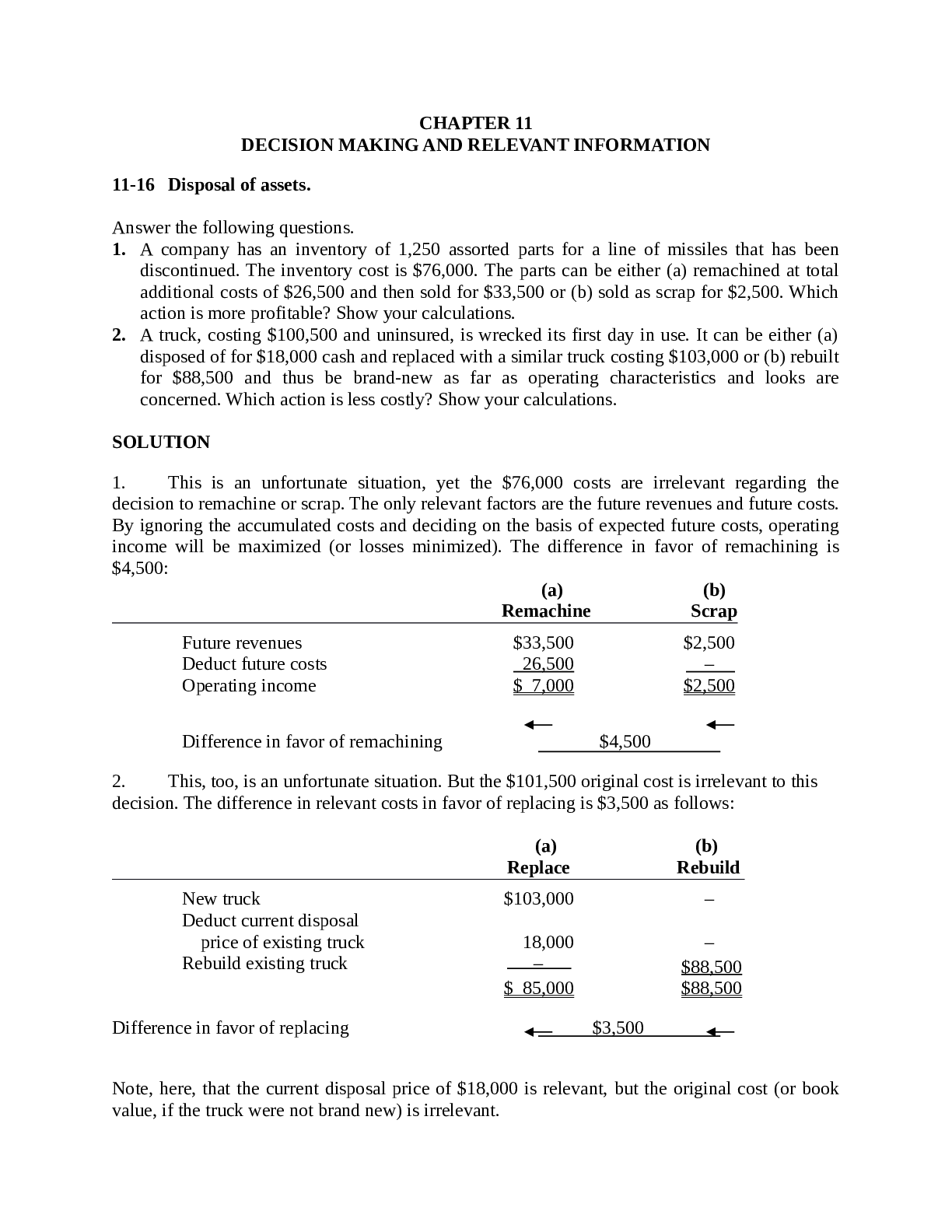
ACCOUNTING QUESTIONS, SOLUTIONS & EXPLANATIONS-VERIFIED BY EXPERTS-A COMPLETE GUIDE FOR EAXAM PREPARATION-GRADED A+
ACCOUNTING QUESTIONS, SOLUTIONS & EXPLANATIONS-VERIFIED BY EXPERTS-A COMPLETE GUIDE FOR EAXAM PREPARATION-GRADED A+
By d.occ 2 years ago
$45
8
Reviews( 0 )
$11.00
Document information
Connected school, study & course
About the document
Uploaded On
Jul 09, 2021
Number of pages
80
Written in
Additional information
This document has been written for:
Uploaded
Jul 09, 2021
Downloads
0
Views
47





.png)

.png)
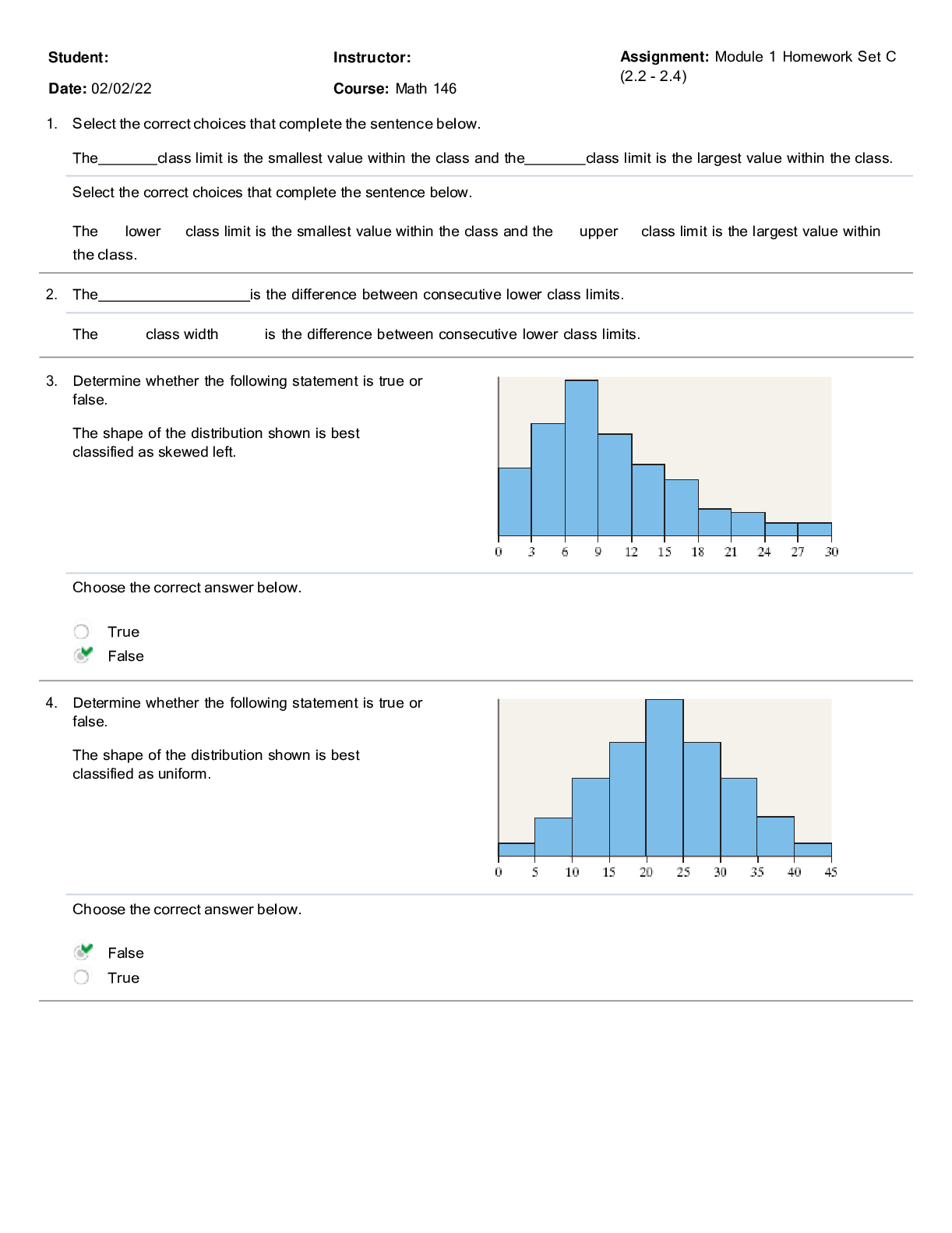




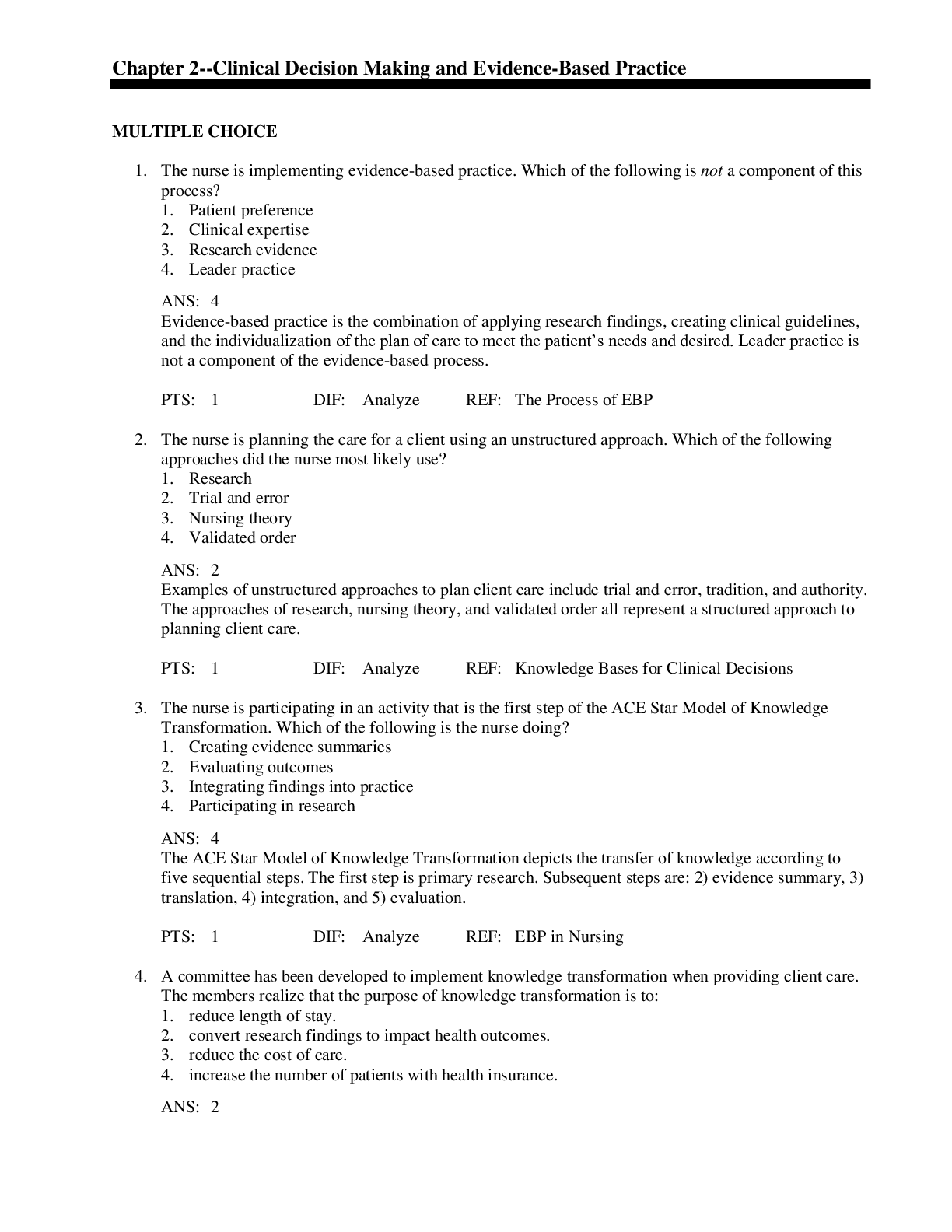
 Med Surg test Questions and Answers with Explanations, 100% Correct, Download to Score A.png)
.png)
